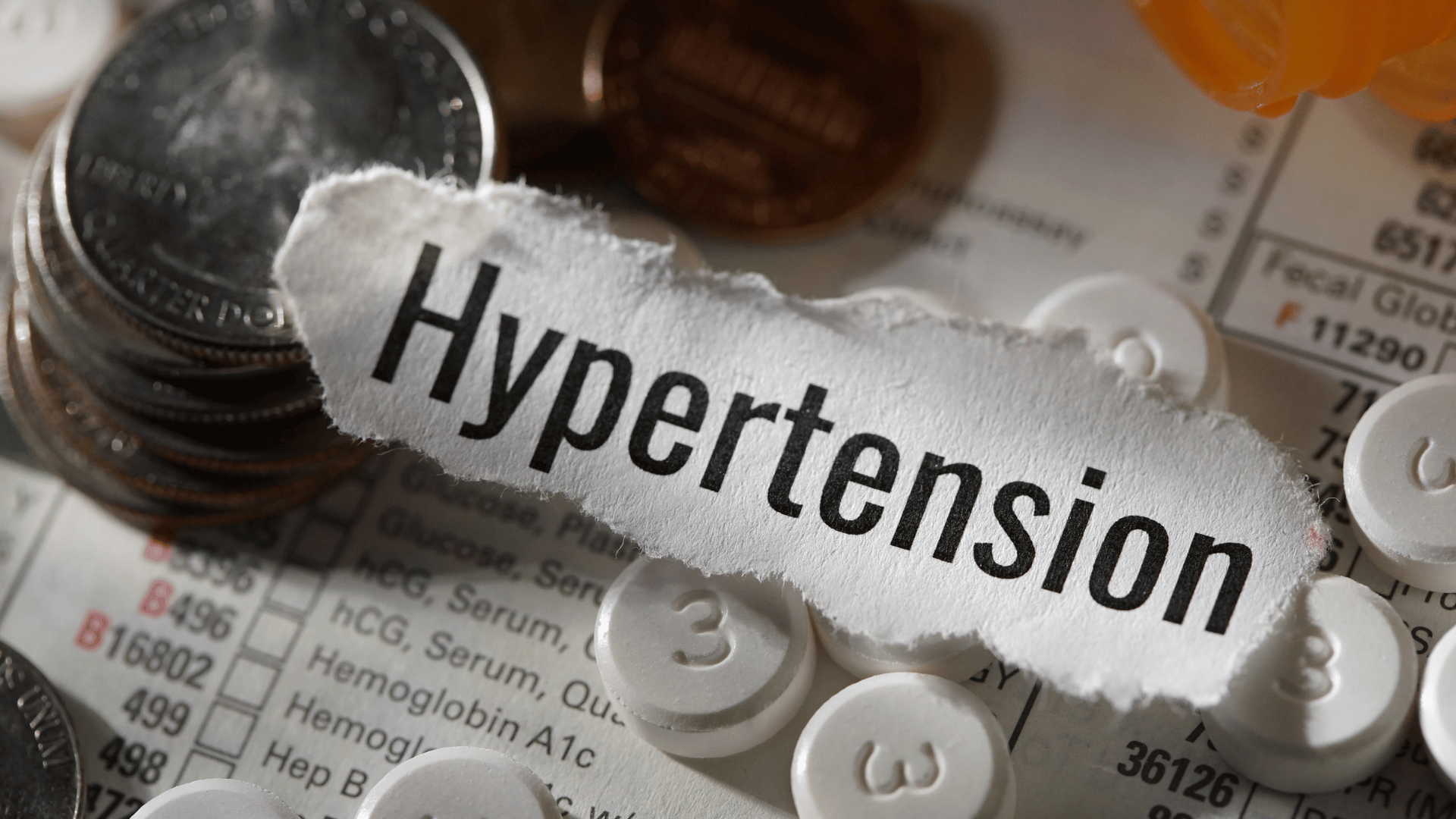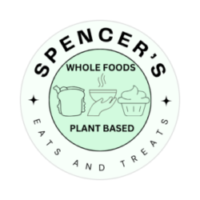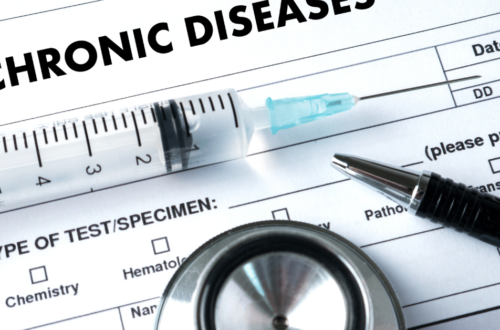Disclosure: This post contains affiliate links, meaning that if you are to make a purchase via these links, the blog author receives a small commission. This helps to fund the mission of Spencer’s Whole Foods Plant Based Eats and Treats, which is to be on the frontier in the fight against obesity and chronic disease in Trinidad & Tobago by contributing to changing the dietary environment of the nation.
As an Amazon Associate, the blog author earns from qualifying purchases.

Hypertension Statistics in Trinidad & Tobago
It is a well-known fact that hypertension is one of the major chronic diseases plaguing the population of Trinidad and Tobago.
According to the Pan-American Health Organisation (PAHO), Trinidad & Tobago’s incidence rate of hypertension is 25.8%, which is higher than the Caribbean’s incidence rate of 23% and higher than the global average of 17.6%.
When assessed by gender, the hypertension rate in T&T men is 29% and 23.7% in T&T women.
This was stated by Senator Paul Richards, chairman of the Joint Select Committee of Social Services and Public Administration in a meeting with the heads of the various Regional Health Authorities and top medical personnel of the Ministry of Health.
Downstream Effects of Hypertension
Kidney Disease
Hypertension is a serious problem if left unchecked.
At the time of writing, World Kidney Day was recently celebrated. According to Dr Lackram Bodoe, Member of Parliament for the Fyzabad constituency, in his letter to the Trinidad Express on 15th March 2024 titled “Caring for your kidneys”, ‘there are over 1500 persons currently undergoing dialysis in Trinidad & Tobago and kidney disease is a leading cause of death in Trinidad & Tobago.
Hypertension is a very potent risk factor for kidney disease. According to worldkidneyday.org,
High blood pressure can damage blood vessels in the kidneys, reducing their ability to function properly. If the blood vessels in the kidneys are damaged, they may stop removing wastes and extra fluid from the body. Having extra fluid in blood vessels may then raise the blood pressure even more, creating a dangerous cycle.
But kidney disease can also cause high blood pressure, and when this happens the high blood pressure makes the kidneys deteriorate more quickly. About nine out of ten people with CKD stages 3-5 have high blood pressure. Hypertension is considered to be a leading cause of CKD.
Heart Attacks
The American Heart Association describes how hypertension can lead to heart attacks:
The excess strain and resulting damage from high blood pressure causes the coronary arteries serving the heart to slowly become narrowed from plaque — a buildup of fat, cholesterol and other substances. This slow process is called atherosclerosis.
As arteries harden with plaque, blood clots are more likely to form. When an artery becomes blocked due to plaque buildup or a blood clot, the flow of blood through the heart muscle is interrupted, starving the muscle of oxygen and nutrients. The damage or death of part of the heart muscle that occurs as a result is a heart attack.
Other Downstream Effects of Hypertension
- Stroke — Blood vessels that supply blood to the brain either become blocked (ischemic) or burst (haemorrhagic).
- Heart failure — The attrition from high blood pressure can cause the heart to enlarge and weaken. There is a diminished capacity of the heart to supply blood to the body.
- Vision loss — High blood pressure can strain or damage blood vessels in the eyes either via lack of blood flow to the eye retina, fluid buildup, damage to the optic nerve, or the secondary effect of a stroke.
- Sexual dysfunction — Erectile dysfunction in men and may contribute to lower arousal in women. Erectile dysfunction has been coined ‘the canary in the coal mine‘, with good reason. Studies have shown an increased risk of cardiovascular events, heart attack and all-cause mortality in men with erectile dysfunction.
- Angina (chest pain) — Over time, high blood pressure can lead to heart disease including microvascular disease (MVD). Angina, or chest pain, is a common symptom.
- Peripheral artery disease (PAD) — Atherosclerosis from high blood pressure can lead to narrowed blood vessels in the body extremities (legs, arms, stomach and head), causing pain, fatigue and possible amputations.
Hypertension Risk Factors
Hypertension, according to medical sources, has quite a few risk factors. These risk factors can be grouped into 2 main categories:
- Modifiable (capable of being changed)
- Non-modifiable (Cannot be changed)
The non-modifiable risk factors include:
- Age – The risk of hypertension increases with age
- Race – Hypertension is prevalent among people of African heritage.
- Family history
The modifiable risk factors include:
- Being overweight or obese
- Lack of exercise
- Tobacco/vaping/drug use
- High sodium diet
- Low potassium diet/levels
- Excessive alcohol consumption
- Stress
- Other chronic conditions e.g. diabetes, kidney disease
- Pregnancy (in some cases)
Most people in Trinidad and Tobago generally accept that frequent indulgence in tobacco and alcohol can lead to a myriad of health problems, including hypertension.
However, what tends to get glossed over is how pervasive the local food environment is, especially when it comes to salt/sodium intake.

Salt consumption in Barbados
To establish some perspective on this, let us shift our attention to the nation of Barbados, a fellow island member of the Caribbean Community (CARICOM).
According to a national salt consumption study done in Barbados in 2015,
In Barbados, hypertension is a public health priority, as recent evidence indicates that 42% of the adult population in Barbados is hypertensive.
Trinidad and Tobago’s prevalence of hypertension reached that level according to 2019 World Health Organisation statistics.
Findings from Barbados National Salt Study
Here are the main findings of the salt study done in Barbados:
- The mean sodium excretion for the population was 2700 mg/d (equivalent to 6750 mg salt or 1 1/4 tsp), (2900 mg/d in men and 2500 mg/d in women ).
- This was 1.8 times greater than the recommended daily intake of 1500 mg/d of sodium for black populations and high-risk groups.
- 79% of women and 89% of men consume more than 1.5g/d of sodium
- Using the more conservative upper limit of 2000 mg/d (equivalent to 5000 mg of salt), 68% of the sample population consumes more than this amount.
- The mean potassium excretion was 1500 mg/d; being slightly higher in men (1600 mg/d) than in women (1400 mg/d). These levels, for all groups, are only one-third of the adult recommendation of 4700 mg/d for potassium.
- The mean sodium-to-potassium ratio was found to be 2.0 for the total population. Based on current recommendations ideally this ratio should be 0.5 or less.
Also, the top five individual food items contributing to sodium intake in the population were:
- rice and peas (6.0%)
- baked chicken (5.6%)
- macaroni pie (4.3%)
- white rice (4.2%)
- coconut bread (3.8%)
Altogether, these foods contributed almost 25% of the total sodium intake (675 mg/d of sodium).

Two more critical findings from the study were:
- Most individuals (94.7%) reported that they were aware that a high-salt diet was unhealthy, with 75% linking a high intake of salt to hypertension.
- However, two out of three individuals thought that they were consuming the right amount of salt or even too little, when in fact they were consuming too much.
So what kind of implications do this data have for the country of Trinidad & Tobago?
Trinidad & Tobago cuisine
Trinidad and Tobago boasts a rich and unique cuisine that locals and visitors appreciate.
Imagine it took Mark Weins almost an hour to showcase Trinidad & Tobago food (and that’s just Port-of-Spain)
Trinidad and Tobago’s cuisine is as a result of the mixing together of many heritages over time. The main influences with respect to food are:
- West African or ‘Creole’
- East Indian
- Chinese
- Syrian/Lebanese

However, this makes it somewhat difficult to assess the nutritional composition of the local dishes, due to the composite nature of the dishes.
This gap was filled by a study done by Ramdath et al, which assessed the nutritional composition of commonly consumed dishes in Trinidad & Tobago, which included the sodium portion.
In Barbados, the predicament is similar. Bajan cuisine tends to be composite in nature. Also, if one compares the commonly consumed dishes in Trinidad & Tobago to Barbados, one will notice a lot of similarities between the dishes.
| Trinidad & Tobago food | Barbados food |
|---|---|
| Cornmeal coo-coo | Cou-cou |
| Chicken/Beef Pelau | Peas and rice |
| Fish broth | Fish soup |
| Pig souse | souse |
| Minced chicken/beef | Minced meat |
| Vegetable fried rice | Vegetables and rice |
| Saltfish Buljol | Frizzled saltfish |
Another point of note is that the estimated sodium consumption of Trinidad & Tobago, according to PAHO/WHO, ranges between 2750 mg/d and 3490 mg/d which will equate to a salt consumption ranging between 6875 mg/d and 8725 mg/d
Therefore, given the similarity in cuisine and rates of sodium consumption in both Trinidad & Tobago and Barbados, it can explain the similarity in the high hypertension rates in both CARICOM countries.
Sodium content of common Trinidad & Tobago foods
Here is the sodium content of some common ‘Trini’ dishes according to Ramdath et al.(portion size of 100g or about 1/4 lb):
| Trinidad & Tobago Food | Sodium content of 100g (approx 0.25 lb portion) |
|---|---|
| Vegetable dishes | |
| Bhagi / spinach | 978 mg |
| Curried bodi | 409 mg |
| Fried caraili | 1439 mg |
| Corn pie | 359 mg |
| Corn soup | 226 mg |
| Callaloo | 212 mg |
| Curried eggplant and potato | 121 mg |
| Dhal | 269 mg |
| Pumpkin Talkari | 700 mg |
| Fried Ochro | 1167 mg |
| Eggplant choka | 345 mg |
| Tomato choka | 753 mg |
| Curried channa & potato (aloo) | 242 mg |
| Curried pigeon peas | 462 mg |
| Stewed pink beans | 563 mg |
| Stewed pigeon peas/red beans | 582 mg |
| Stewed black beans | 575 mg |
| Stewed lentils | 380 mg |
| Stewed black-eye peas | 506 mg |
| Starchy dishes | |
| Vegetable fried rice | 202 mg |
| Macaroni pie | 181 mg (highly questionable) |
| Coconut bake | 376 mg |
| Fried bake | 510 mg |
| Roast bake | 479 mg |
| Sada roti | 429 mg |
| Dhalpuri roti | 470 mg |
| Paratha roti | 279 mg |
| Cornmeal coo-coo | 290 mg |
| Oatmeal porridge | 50.3 mg |
| Breadfruit Oil Down | 62.8 mg |
| Green banana salad | 265 mg |
| Dumplings | 206 mg |
| Curried potato | 283 mg |
| Fried potato | 802 mg |
| Meat / meat alternatives | |
| Curried chicken | 549 mg |
| Minced chicken | 1281 mg |
| Stewed chicken | 476 mg |
| Stewed chicken feet | 464 mg |
| Curried beef | 581 mg |
| Minced beef | 1285 mg |
| Curried goat | 761 mg |
| Curried duck | 541 mg |
| Stewed beef/lamb/pork | 610 mg |
| Chicken pastelle | 877 mg |
| Beef pastelle | 879 mg |
| Chicken pelau | 266 mg |
| Chicken soup | 142 mg |
| Beef soup | 141 mg |
| Beef pelau | 337 mg |
| Stewed turkey | 459 mg |
| Curried liver | 588 mg |
| Minced soya | 1715 mg |
| Stewed soya | 877 mg |
| Curried soya | 706 mg |
| Soya pastelle | 1032 mg |
| Seafood | |
| Curried fish | 498 mg |
| Curried crab | 842 mg |
| Curried shrimp | 564 mg |
| Saltfish buljol | 1003 mg |
| Smoked herring | 856 mg |
| Stewed saltfish | 136 mg |
| Stewed fish | 684 mg |
| Fish broth | 268 mg |
| Sweets | |
| Coconut sweet bread | 176 mg |
| Cassava pone | 22.5 mg |
| Khurma | 49.2 mg |
| Pamie | 178 mg |
| Banana bread | 188 mg |
| Currants roll | 363 mg |
| Coconut drop | 413 mg |
| Barfi | 191 mg |
| Coconut roll | 329 mg |
| Parsad | 125 mg |
| Commonly consumed snacks / street food/ miscellaneous dishes | |
| Doubles | 381 mg |
| Pig souse | 525 mg |
| Saheena | 325 mg |
| Phulourie | 1350 mg |
| Aloo pie | 465 mg |
| Beef pie | 509 mg |
| Cheese pie | 527 mg |
| Cheese paste | 549 mg |
| Mango chutney | 2386 mg |
| Mango talkari | 599 mg |
| Mixed seasoning | 2745 mg |
Sodium consumption adds up (no matter where you live)
Unfortunately, there has not been any salt consumption study done in Trinidad & Tobago to have a firm estimate of the salt consumption levels in the population.
Well, at least to my knowledge. (Anyone who wants to correct me on that, please let me know)

However, given the sodium levels in the table above, it is possible why Trinidad and Tobago has a high sodium consumption level.
THERE IS TOO MUCH SALT/SODIUM IN OUR FOODS!!
To illustrate this point, let’s hypothetically construct two different ‘days of eating’ in Trinidad & Tobago.
According to research, most people tend to eat three to five pounds of food a day. In this case, the two hypothetical persons will eat three pounds of food in a day.
Person A:
- Breakfast: 2 doubles and 1 saheena
- Lunch: 100g Vegetable fried rice, 100g stewed red beans, 100g macaroni pie, 100g callaloo
- Dinner: 400g chicken pelau
Person B:
- Breakfast: 2 100g Fried bake and 2 100g servings of saltfish buljol
- Lunch: 2 100g servings of paratha roti, 1 100g serving curried channa and potato and 1 100g portion curried chicken
- Dinner: 2 sada roti, 2 100g servings of eggplant choka and 1 beef pie.
Sodium consumption of Person A: (381 x 2) + 325 + 202 + 582 + 181 + 212 + (266 * 4) = 3328 mg
Sodium consumption of Person B: (510 *2) + (1003 *2) +(279 * 2) + 242 + 549 + (429*2) + (2*345) + 509 = 6432 mg

Some more perspective. According to this article, the WHO recommends a daily sodium consumption limit of 2000 mg.
The American Heart Association (AHA) has an even stricter sodium limit of 1500 mg a day.
Person A consumes more than 1.5x the WHO sodium limit and more than 2x the AHA limit
Person B consumes more than 3x the WHO sodium limit and over 4x the AHA limit
Now granted that these are hypothetical individuals with hypothetical patterns of eating, these dietary patterns are very much within the realms of possibilities for an average individual in Trinidad and Tobago, based on experience.
The nation of Barbados has recognised the insidious nature of sodium consumption and has implemented awareness campaigns to highlight this
Conclusion
All that has been mentioned before further serves to highlight the important role the food environment plays in the health of the population. All the more reason for the population to be more proactive and vociferous in imploring for changes to be made in the food environment via various measures.
These measures may include:
- Taxes on foods high in salt, sugar and fats, alcohol and tobacco. (deja vu?)
- Subsidies on healthy foods e.g. fruits, vegetables, whole grains, nuts, seeds and legumes
- Restrictions on the marketing of unhealthy food items
- **Bonus** Voting for legislators with the will and fortitude to make the necessary community and nationwide changes for a healthier food environment (This is a whole topic for another time)
The present Prime Minister of Barbados mentioned in her budgetary address in 2023 about an imminent sodium tax. Here are some of the interesting remarks she had to say:
I just came from Buenos Aires in Argentina and they do not have salt and pepper shakers on the table unless you ask for it. We’re playing with our lives. We’re playing with our lives. The rate of diabetes in this country is simply too high and chronic NCDs, and I am committed also to work with the Ministry of Health and the population to do that which is necessary,” said the Barbadian Prime Minister.
Meanwhile, this is what the Trinidad & Tobago Minister of Health had to say about a tax on sugar-sweetened beverages, which has been recommended and lobbied for by many health advocacy groups in the Caribbean. These include The Diabetes Association of Trinidad & Tobago (DATT), the Healthy Caribbean Coalition (HCC)and the Caribbean Public Health Agency (CARPHA)
Notice the difference in approaches to the problem of the unhealthy food environment.
One leader is giving a voice to the problem, yet not considering a tried and tested solution. The other leader has given a voice to the problem AND put legislation in place to address the poor food environment.
If there is to be a measurable dent in the hypertension crisis in Trinidad & Tobago, every citizen must have the attitude of the Barbados Prime Minister.
Be willing to act on changing our food environment to reduce the incidence of hypertension.






